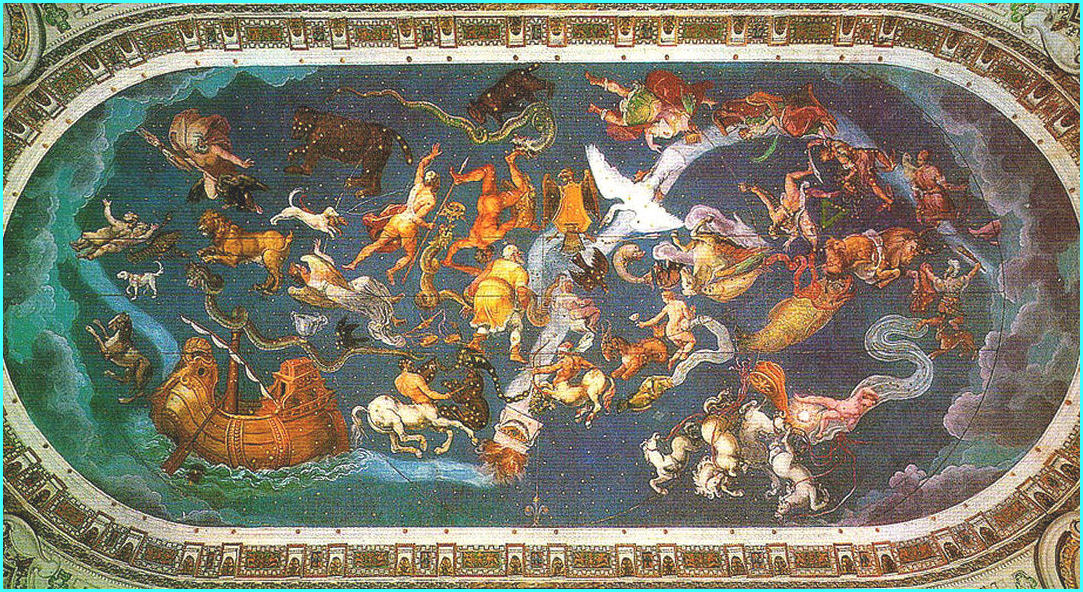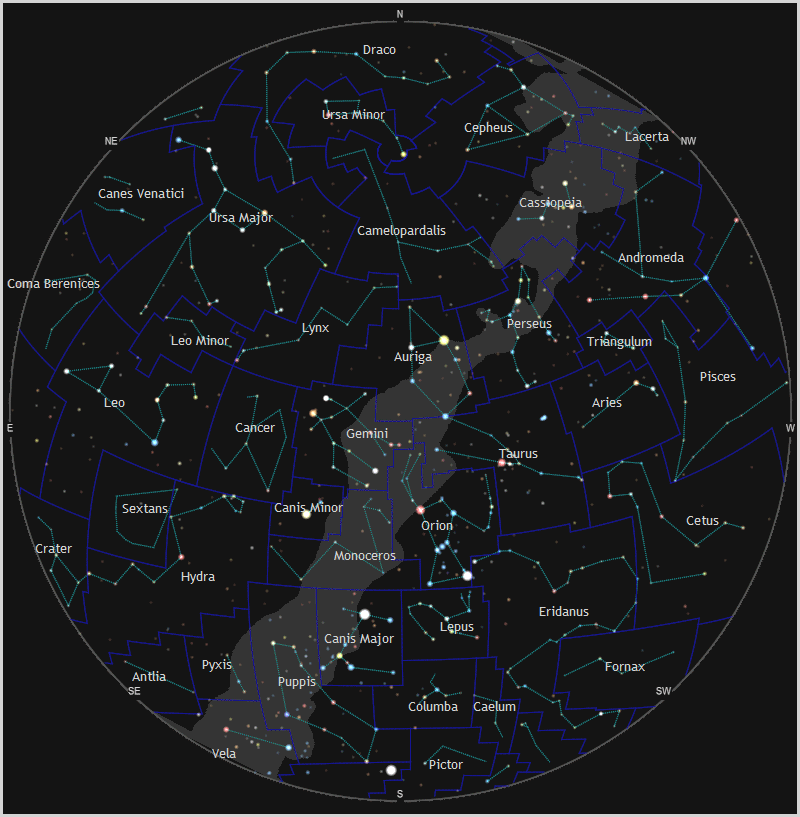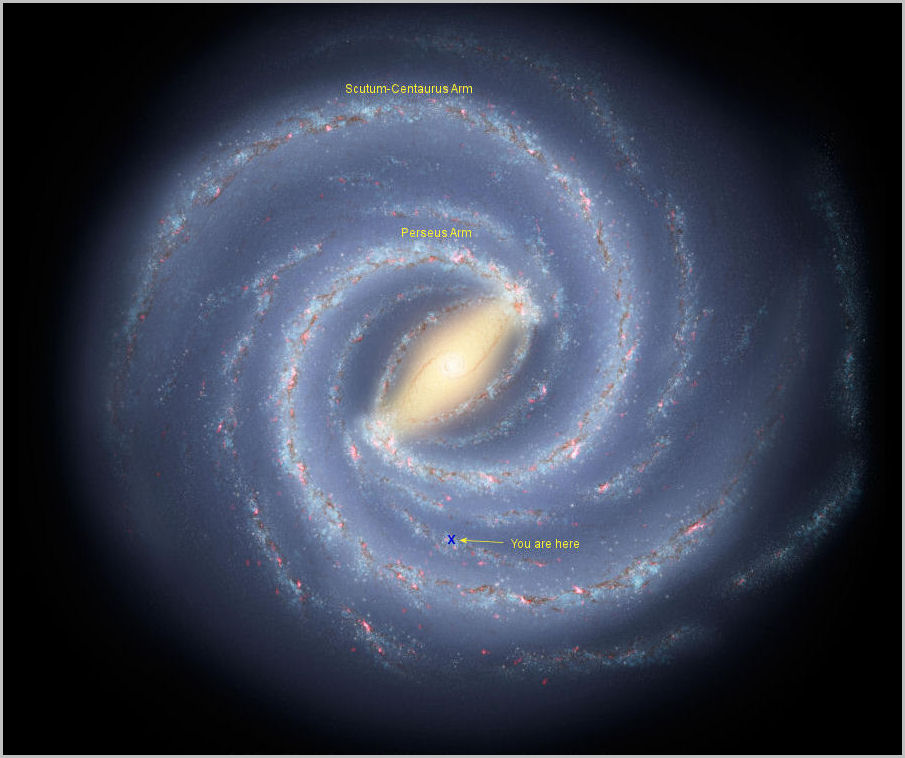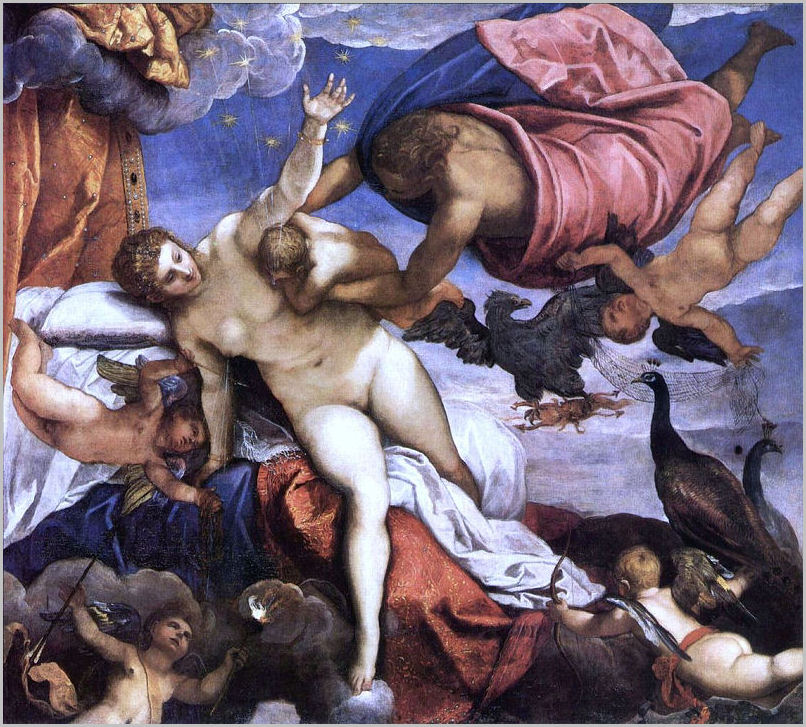| HOME |
|---|

Our Road Map of the Heavens
And God said, Let there be lights in the firmament of the heaven to divide the day from the night; and let them be for signs, and for seasons, and for days, and years. Genesis 1:14
| HOME |
|---|

Outside our solar system stretch the limitless reaches of interstellar space. When we look up at the sky, we are looking at nothing less than the entire Universe. It is a very big place, and very easy to get lost in. Grouping stars into constellations provides a framework for the otherwise overwhelming complexity of a star filled sky. The constellations give us a road map for the sky, and for the Universe, so we can find our way around.
But thanks to the imaginations of our ancestors, the constellations do a lot more than that. They bring the sky alive, with tales of gods and men and magic, complete with heroes, damsels, and beasts both foul and fair. Tales of high adventure and romance that were an integral part of the ancient world, preserved forever in the night sky. So, just as our future is certainly, inevitably written in the stars, our past is very much up there too.

People have been making pictures out of the stars since time began, and there are Babylonian star charts dating back to 2,000 BC, but the first definitive collection of constellations was put together by the Egyptian astronomer, Claudius Ptolemy in 149 AD, and his original 48 constellations are used to this day. He also introduced the star magnitude system, where the brightest stars were considered to be "first magnitude", down to the faintest naked eye stars at sixth magnitude, and this reverse numbering system is also still in use today. (It is only fair to add that much of Ptolemy's work including the stellar magnitude system was based on the previous efforts of the great Greek astronomer, Hipparchus of Nicaea, none of whose works unfortunately survived the ages.)
Ptolemy's compendium, the Almagest, became the official textbook of western astronomy for well over a thousand years. With the advent of telescopes, the printing press and global exploration, Ptolemy's work became greatly expanded. Many more constellations were added, and of course a great many more stars. In 1603 German astronomer Johann Bayer introduced a system in which stars were labelled with Greek letters according to brightness and/or significance. Now known as the Bayer Classification system, it is still in use today.
Finally in 1919, the International Astronomical Union (IAU) was founded, and in 1930 it presented the world with a sky containing 88 officially sanctioned constellations with well defined boundaries, retaining all of Ptomely's original 48 constellations as well as his magnitude system, and Bayer's Greek letter classifications.
As a result, we now have a Universe divided into 88 more or less manageable pieces for us to study and explore. There are also 88 keys on a piano, and I will leave it up to you, dear reader, to divine the connection.

The constellations rise in the east and set in the west, just as the Sun and the Moon and the planets do, because of course, the world is spinning. And as it spins, it moves around the Sun, and as it moves around the Sun, its backside (nightside) faces in different directions, and we get to see different parts of the Universe around us. As Earth moves through space/time in its grand and glorious orbit around the Sun, the constellations rise and set about four minutes earlier each night, some gradually becoming lost below the western horizon as others slowly climb up out of the east to take their place. As the seasons change, so do the constellations.
All the stars that form the 88 constellations in our sky reside inside our Milky Way Galaxy. All the thousands of stars we see with our naked eye are but a tiny fraction of the 200 - 400 billion stars that compose our galaxy. There are many other galaxies of course, hundreds of billions of them, each one containing many more hundreds of billions of stars, but they are all very, very far away, many millions of light years, and with one or two notable exceptions, discernible only in telescopes. So although the entire Universe extends beyond our galaxy for unimaginable distances, our reality, our perception, and most of our knowledge is pretty well limited to the galaxy in which we reside. The other galaxies are just too far away.
Our Milky Way Galaxy is shaped roughly like a giant frisbee, stretching over 100,000 light years across, but averaging only 8,000 light years thick. In order to see the galaxy we live in, we would have to somehow send a camera at least a million light years out into space, and we don't have the technology to do that. We can't even come close. The Voyager I spacecraft has been speeding away from Earth at over 38,000 miles per hour for more than three decades now, and has reached a distance of 11.2 billion miles (17.9 billion kilometers). Since one light year is over 6 trillion miles, Voyager has traveled just over one thousandth of one light year, or about 15 light hours. Obviously it will be a very long time - if ever - before we can send a camera far enough away to see exactly what our Milky Way galaxy looks like from the outside.
In 2008, NASA scientists were able to analyze infrared images from the Spitzer Space Telescope, and use sophisticated computer programs to construct a reasonably accurate artist's concept of the structure of our home galaxy. It turns out the Milky Way is a barred spiral galaxy with two major spiral arms extending from the ends of the bars. They are the Scutum-Centaurus Arm and the Perseus Arm. Smaller spiral arm segments include the Sagittarius Arm, Norma Arm, and Outer Arm. We reside in a small spiral segment called the Orion Spur, about 30,000 light years from the galactic centre.

When we look up at the sky, we are usually looking up through the thin part of the galactic disk, and therefore looking through a relatively thin layer of stars, perhaps only a few thousand, against the vast background blackness of intergalactic space. But on a clear, moonless night you can see a hazy band of light stretching across the sky, like a trail of smoke from some far off celestial campfire. And what looks like smoke or haze is in fact many billions of stars, stretching thousands of light years down through the length of the galactic disk. In the winter the Milky Way is relatively faint, as our view is looking outwards towards the edge of the disk. In the summer it is much brighter, since we are now looking towards the centre of the disk, and seeing stars, behind stars, behind stars. Billions and billions of stars. So many stars, the heart of our galaxy is completely hidden behind them. To the ancient Greeks, the band of hazy light that stretched across the sky was galaktos, or milk, spilt from the breast of Hera, queen of the gods, as she suckled the infant Hercules. And so the cosmic city in which our solar system resides became The Milky Way Galaxy.


Any study of the cosmos has to start with the constellations, and although this may seem like a daunting task at first, the truth is: nothing could be easier. You don't need a telescope, or even binoculars, just a rudimentary star chart and a willingness to get up off the couch and go outside after dark. Take the couch with you if you like. Lying on your back is the best way to study the night sky.
Take it one constellation at a time. Identify it on the chart, then go outside, wait a few moments for your pupils to dilate, and try to find it. It may take a while at first, but when you finally recognize it, I guarantee you'll be very pleased with yourself. Before you know it you'll be familiar with the dozen or so major landmark constellations, and you'll never look at the night sky (or your place within it) the same way again.
You can follow the sequential links at the bottom of each page to take a step by step tutorial journey through all the constellations visible from the northern hemisphere, season by season, as well as some of the more notable constellations of the southern hemisphere. And it all starts at the beginning of the terrestrial year, in January, with the magnificent winter constellation of Orion.
|
|
|
|
|
|